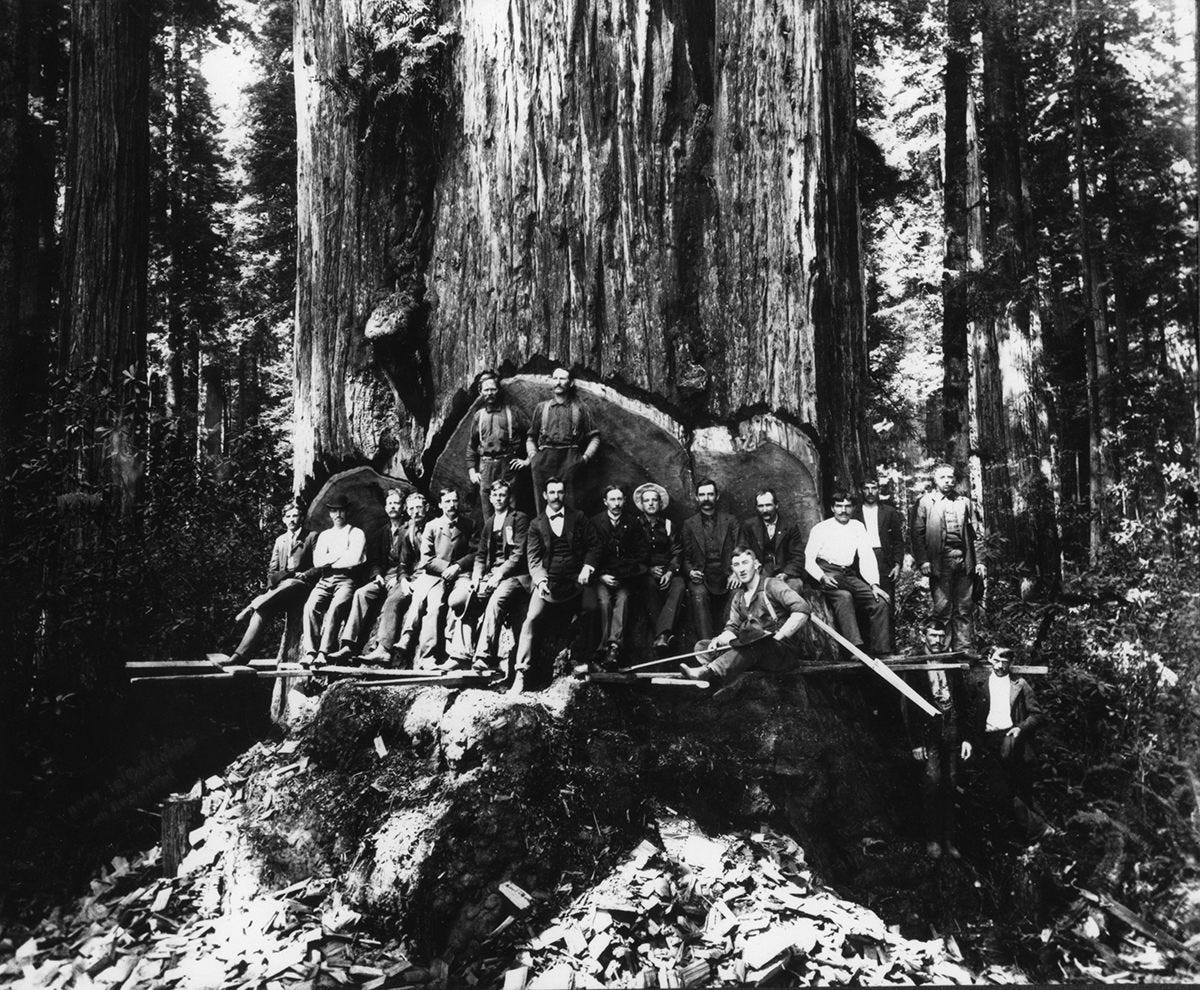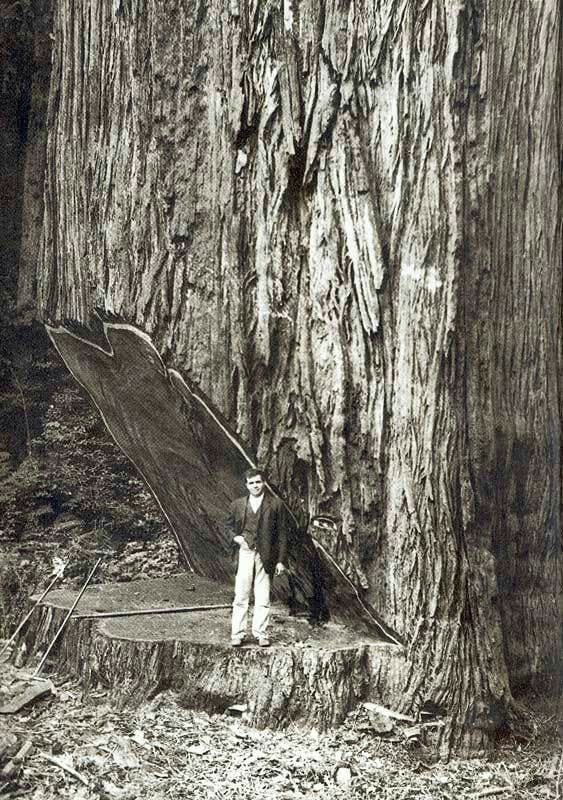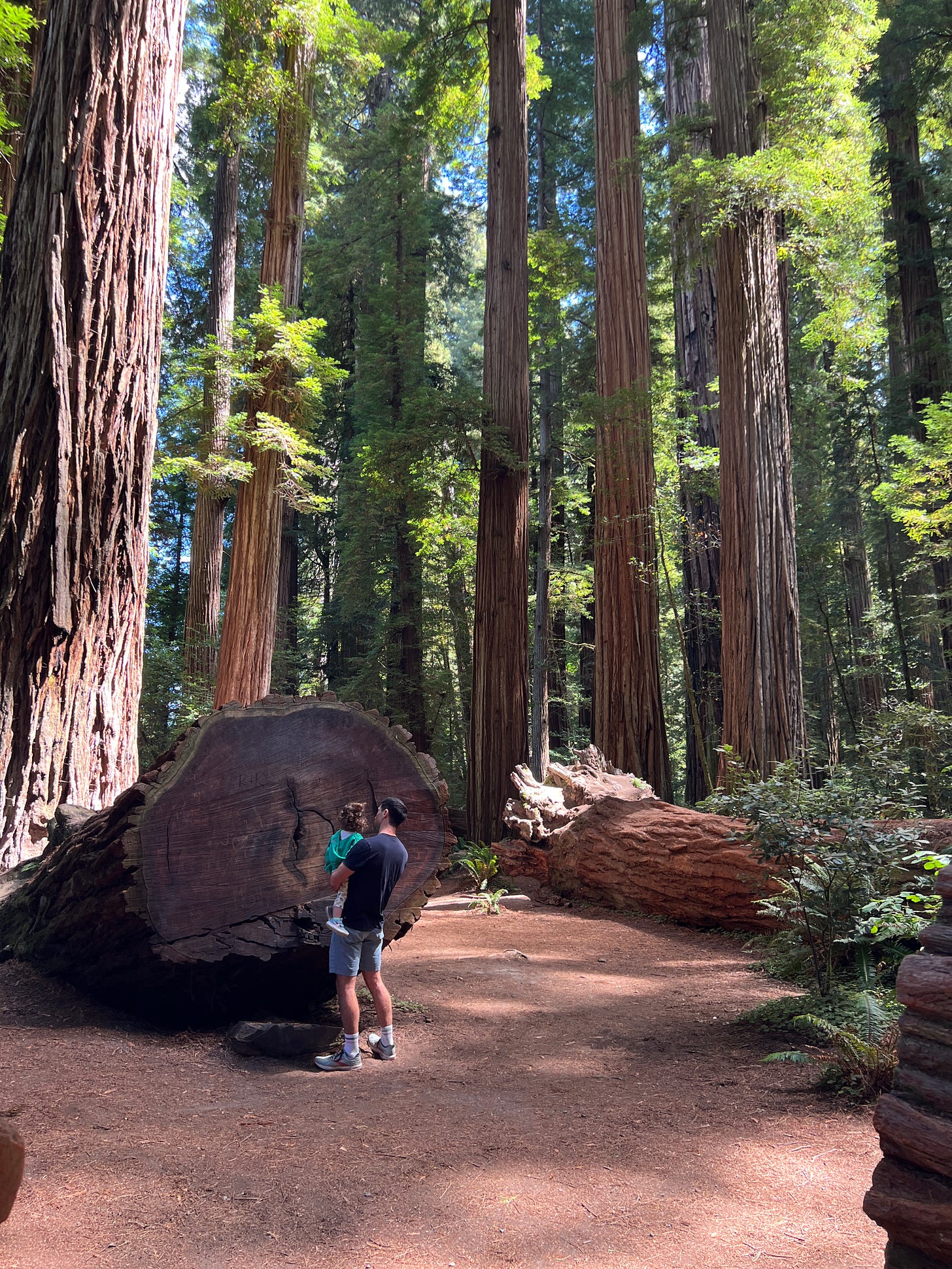Apologies for my internet inactivity, but I’ve been immersed in a project that—as unlikely as it is to ultimately attain its full form on the silver screen—I can’t seem to quit.
Suddenly, I find myself on draft three of a horror screenplay set in the Redwoods of Northern California. I also have a short film currently on draft two that I’m terribly excited to fund, location scout, cast, and direct. That one, I know, will see the light of day.
I’ll give you the bare bones of the full movie— a young scion of a storied Redwood logging company accepts a challenge from an environmental activist, and they both wind up in the company’s original lumber ghost town in order to showcase the company’s newfound environmental modernity. But the past won’t stay buried, and they soon encounter a sinister, brutal force from the days of the first falling Redwoods. Will they escape with their lives?
But, ok, why am I approaching the Redwoods—an unrivaled landscape of inspirational beauty and ego-annihilating goodness—with an eye toward horror and death?
Well, first off, it’s a matter of logistics. I am at heart (and in acting class every week), an actor whose life’s work is to make stuff that entertains and diverts people. But as a content creator and writer who has gained a modest following in the past three years, I desperately want to incorporate nature and it’s purest expression—trees—into my storytelling. I think that’s my main job now.
Trees belong in mainstream entertainment as powerful mediators of human beings’ experiences with each other. We strap ourselves to them in protest, we kiss (and do other stuff) under them and on them and in them, we cut them to gain superiority over others in profit, we grow them in memory of the dead and hope for the living, we visit them alone as refuge from the noise. They are inherently dramatic in form, but we also make them more so and always have.
So you can understand why it’s important to me to somehow grapefruit face mash them into dramatic storytelling—I believe their place there is as at least as thematically relevant as the mafia or monsters or politics.
But, again, logistically, that’s a hard lift and “read my tree screenplay” isn’t the sexiest pitch. So what I’ve decided to do is take one of my favorite genres—horror—and combine it with something visually arresting and, as I perceive it, nightmarish in its history and lore—the Redwoods.
Here are some nightmarish things about the Redwoods (by the way, I’m discussing Coast Redwoods, Sequoia sempervirens, not the Giant Sequoia, Sequoiadendron giganteum, though there’s plenty about their own history that’s disturbing as well):
The indigenous Yurok peoples of Northern California had and have deep spiritual ties to Redwood trees. Historically, they allow Redwood trees to fall naturally before utilizing them for their materials. In their lore, Redwoods represented great “spiritual guardians or warriors”(p.46) And they fell together in the second half of the 19th century—the Yurok from genocide and disease and the Redwoods from logging and exploitation. I think this parallel is haunting. (Their renaissance and that of the Redwoods is, I think, similarly powerful).
There was a particular tree in Yurok lore that “held up the world”(p. 46). And was then promptly logged by settlers. That idea scares the shit out of me.
This insane quote from a Del Norte county capitalist marketing pamphlet from 1881 by some dude named A.J. Bledsoe,: “when all the forests shall resound to the hum and buzz of the saw-mill; when columns of smoke, rising from the Low Divide, shall proclaim the existence of smelting furnaces and reduction works; when hydraulics shall strip the hills of their surface, laying bare rich seams of precious gold; when town and county shall throw off the rust of idle years, and come forth into the bright, new existence of a better day; then can we look forward to hopeful prospects, and can truly say, ‘the night has passed, joy cometh with the morn.’”(p. 176)
This quote from The Beaumont Journal in 1905 (Beaumont, Texas, obviously. But typical of enormous logging operations, where the death rate hung around 1 in 150—the most dangerous profession in America at the time): “When a big gang saw breaks up, it often succeeds in cutting a half dozen men in two before it is stopped...”
The truth is that the Redwoods—the 5% still standing and the 95% cut from the face of the earth—are dark symbols whose past has not been proportionately illuminated. They are perfect symbols of exploitation and elimination—of resources, of people, of our connection to the earth. They are a perfect intersection for our competing instincts of worship and domination.
When I am among the Redwoods, I now see it as a frightening and mesmerizing experience that I can’t tear myself away from, like envisioning standing amongst the ruins of Rome, even though the remains are spectacular, too. I think it’s ripe for a big goddamn, terrifying story, and I’m excited to pitch it around town, soon, even amidst the Hollywood squalor.
It is tragic that beauty and brutality have a natural attraction to each other, but I think it’s on us to explain why. I think the Redwoods are a good place to start.







I am an actress who loves trees and also i’m jewish so what if u put me in your film! (but horror makes me poop my pants). 😌
I don't like horror movies and won't go see it, but I applaud your effort on behalf of the redwoods.